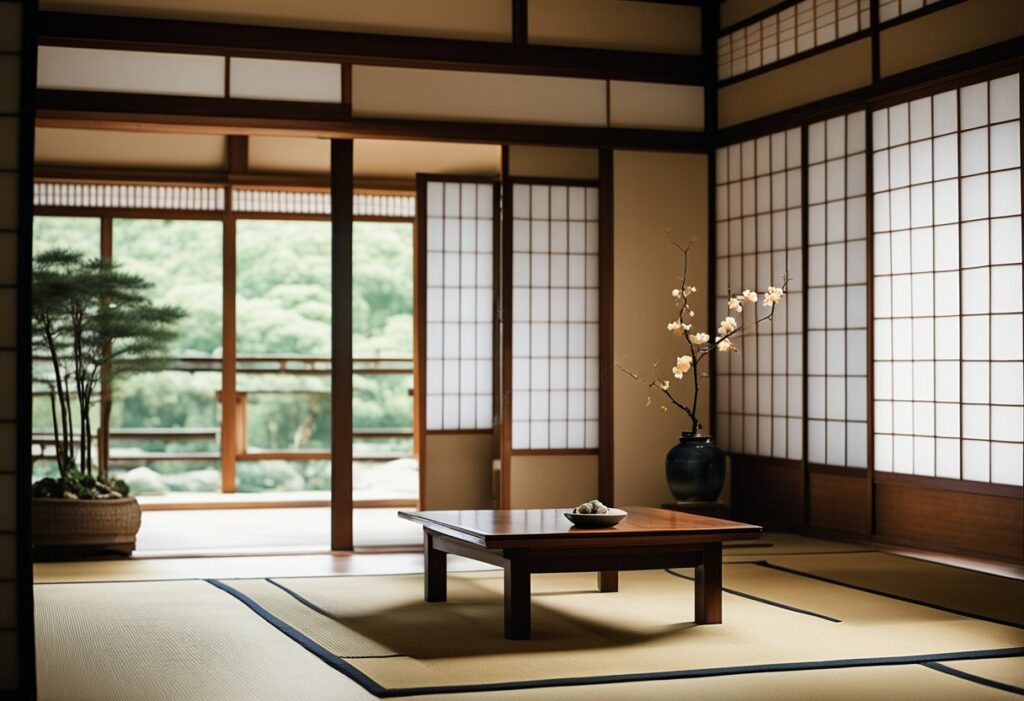Japanese Inspired Interior Design: Creating a Serene and Minimalist Home
If you’re looking to create a peaceful and harmonious living space, Japanese inspired interior design might be just what you need. This style is characterised by its natural materials, minimalist aesthetics, and emphasis on harmony and balance. It’s a great way to bring a sense of tranquillity and simplicity into your home.
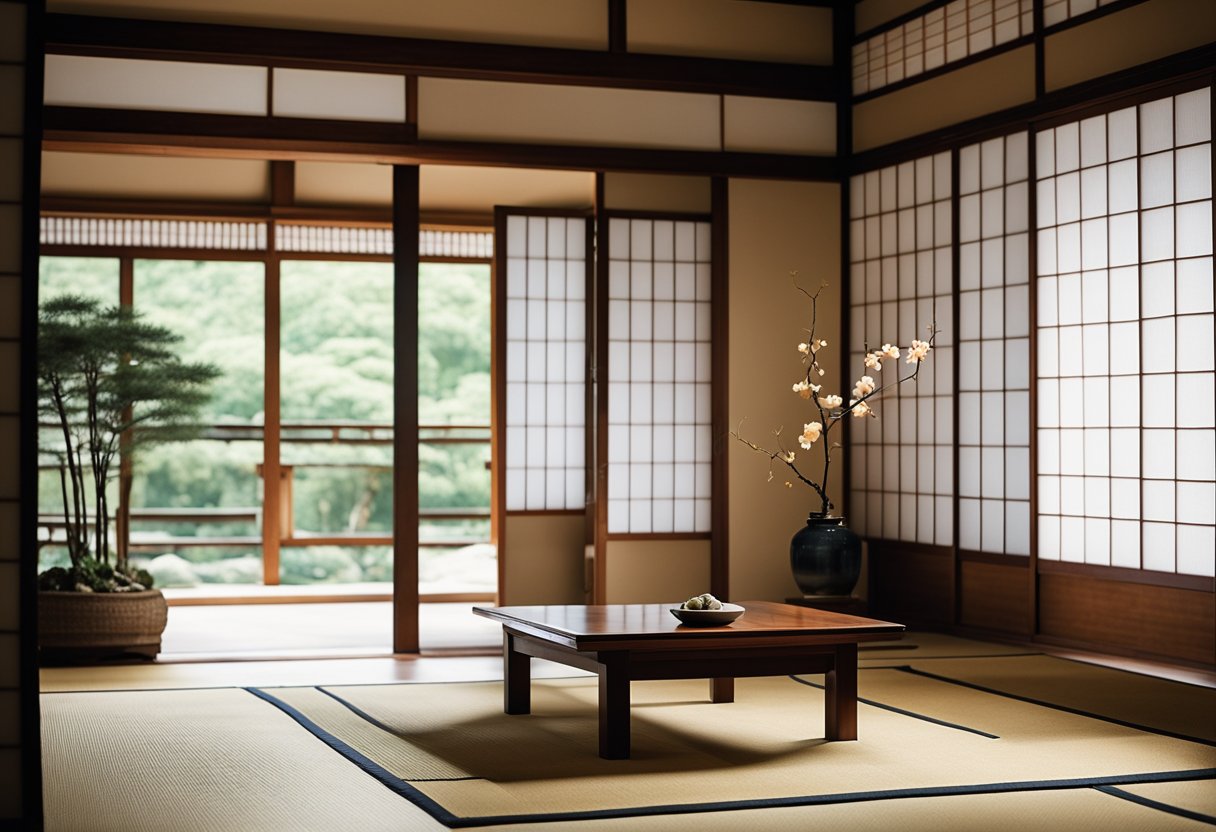
Japanese inspired interior design is rooted in tradition and style, drawing on centuries-old design principles that prioritise the relationship between humans, nature, and the built environment. It’s a style that emphasises simplicity, natural materials, and a sense of balance and harmony. By integrating these design elements into your modern living space, you can create a home that feels both timeless and contemporary.
Key Takeaways
- Japanese inspired interior design is characterised by natural materials, minimalist aesthetics, and a focus on harmony and balance.
- This style draws on centuries-old design principles that prioritise the relationship between humans, nature, and the built environment.
- By integrating Japanese design elements into your modern living space, you can create a home that feels both timeless and contemporary.
Foundations of Japanese Inspired Interior Design
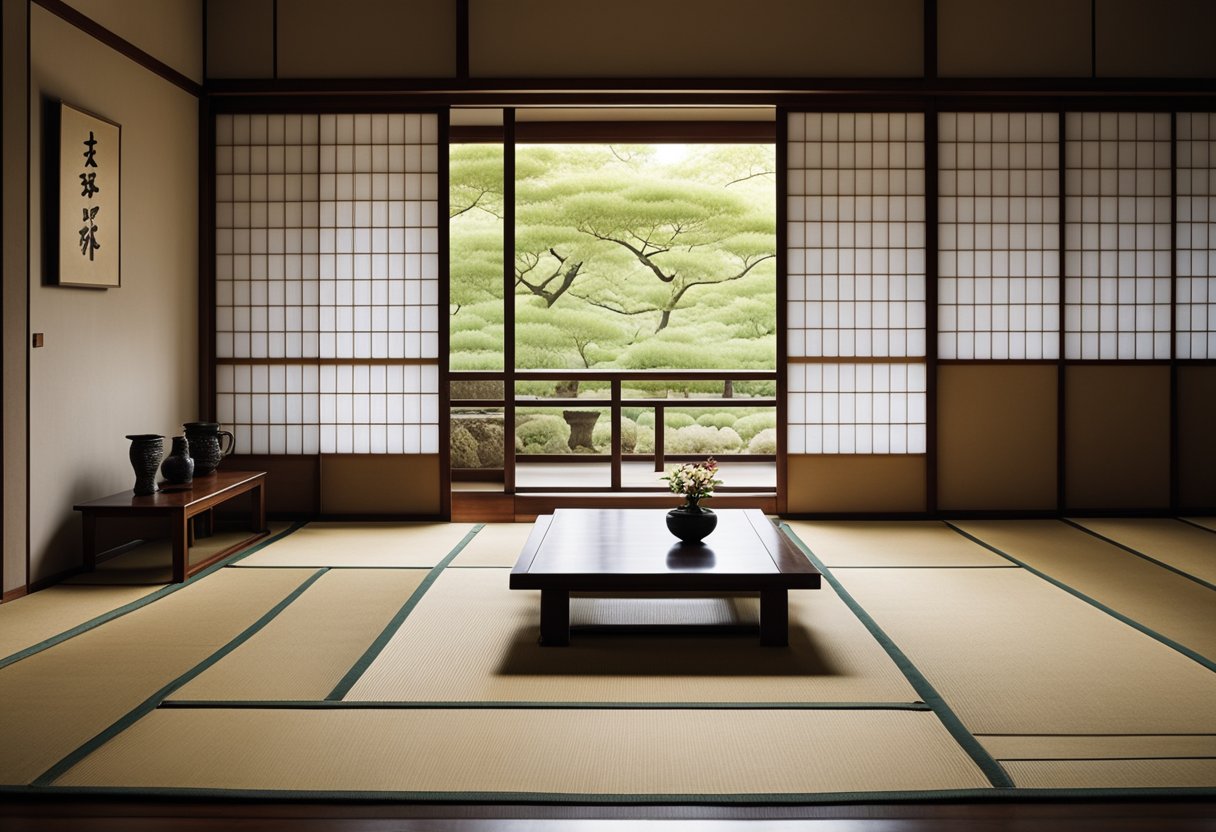
If you’re looking to create a calm and serene living space, Japanese inspired interior design might be just what you need. Drawing inspiration from nature and traditional Japanese culture, this design style emphasises minimalism, simplicity, and the beauty of imperfection. Here are some of the key elements that make up the foundations of Japanese inspired interior design.
Influence of Nature and Natural Materials
One of the most important aspects of Japanese inspired interior design is the connection to nature. Materials such as wood, stone, and bamboo are commonly used to create a sense of warmth and organic texture. Tatami mats, made from woven rush grass, are also a popular choice for flooring. By bringing natural materials into your home, you can create a space that feels grounded and connected to the earth.
Minimalism and Simplicity
Japanese inspired interior design is all about simplicity and minimalism. Clean lines, uncluttered spaces, and a neutral colour palette are all key elements of this design style. By keeping things simple, you can create a sense of calm and relaxation in your home. This approach also makes it easier to focus on the beauty of individual objects and materials.
Wabi-Sabi and the Beauty of Imperfection
Wabi-sabi is a Japanese aesthetic that celebrates the beauty of imperfection. In Japanese inspired interior design, this concept is often expressed through the use of handmade objects, natural materials, and items that show signs of wear and tear. By embracing imperfection, you can create a space that feels authentic and lived-in.
In conclusion, Japanese inspired interior design is a great way to create a peaceful and calming home environment. By incorporating natural materials, embracing minimalism, and celebrating the beauty of imperfection, you can create a space that feels both grounded and serene.
Integrating Japanese Design Elements into Modern Living
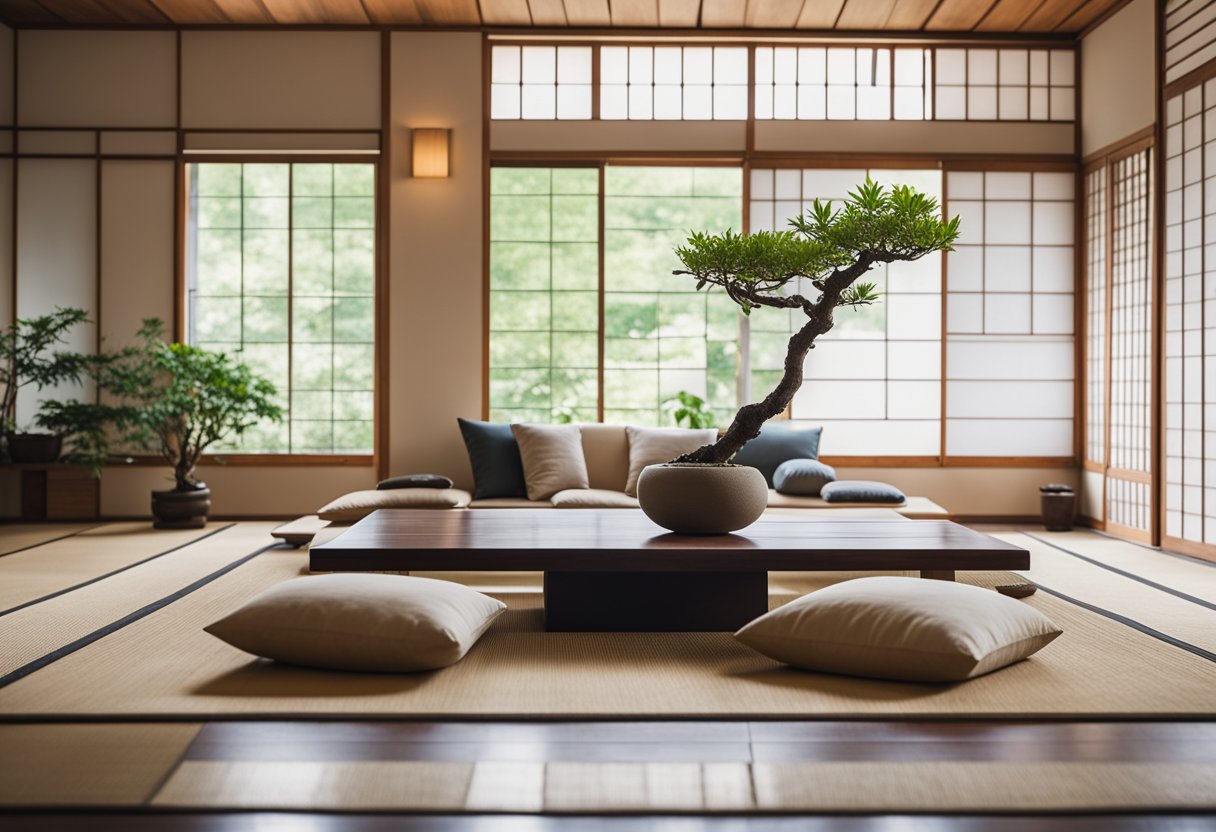
If you’re looking to create a modern living space that exudes understated elegance and balance, consider integrating Japanese design elements into your interior design. Japanese design is characterised by its minimalist aesthetic, functionality, and natural elements, making it a perfect fit for contemporary living spaces. Here are some ways to incorporate Japanese design into your home.
Furniture and Functional Pieces
Japanese design is all about functionality and simplicity. When selecting furniture and functional pieces for your home, opt for pieces that are both beautiful and practical. Consider pieces like low tables, floor cushions, and chairs with clean lines and natural materials like wood and stone. Keep your living space uncluttered by selecting furniture with hidden storage compartments.
Lighting and Spatial Harmony
In Japanese design, lighting is used to create spatial harmony. Natural light is preferred, so consider floor-to-ceiling windows and glass sliding doors to bring in as much natural light as possible. Use soft, indirect lighting to create a warm and inviting atmosphere. Consider incorporating traditional Japanese lighting like lanterns and paper lamps for an added touch of authenticity.
Incorporating Traditional and Contemporary Features
When incorporating traditional Japanese design into your modern living space, it’s important to strike a balance between traditional and contemporary features. Consider using traditional Japanese elements like shou sugi ban (charred wood), ceramics, bonsai trees, and ikebana (flower arrangements) alongside contemporary materials and finishes. Use a neutral palette with muted colours to create a calming atmosphere, and incorporate symmetry and balance into your design.
Japanese design is a perfect fit for modern living spaces, offering understated elegance, functionality, and natural elements. By incorporating Japanese design elements into your home, you can create a space that is both beautiful and practical.
Frequently Asked Questions
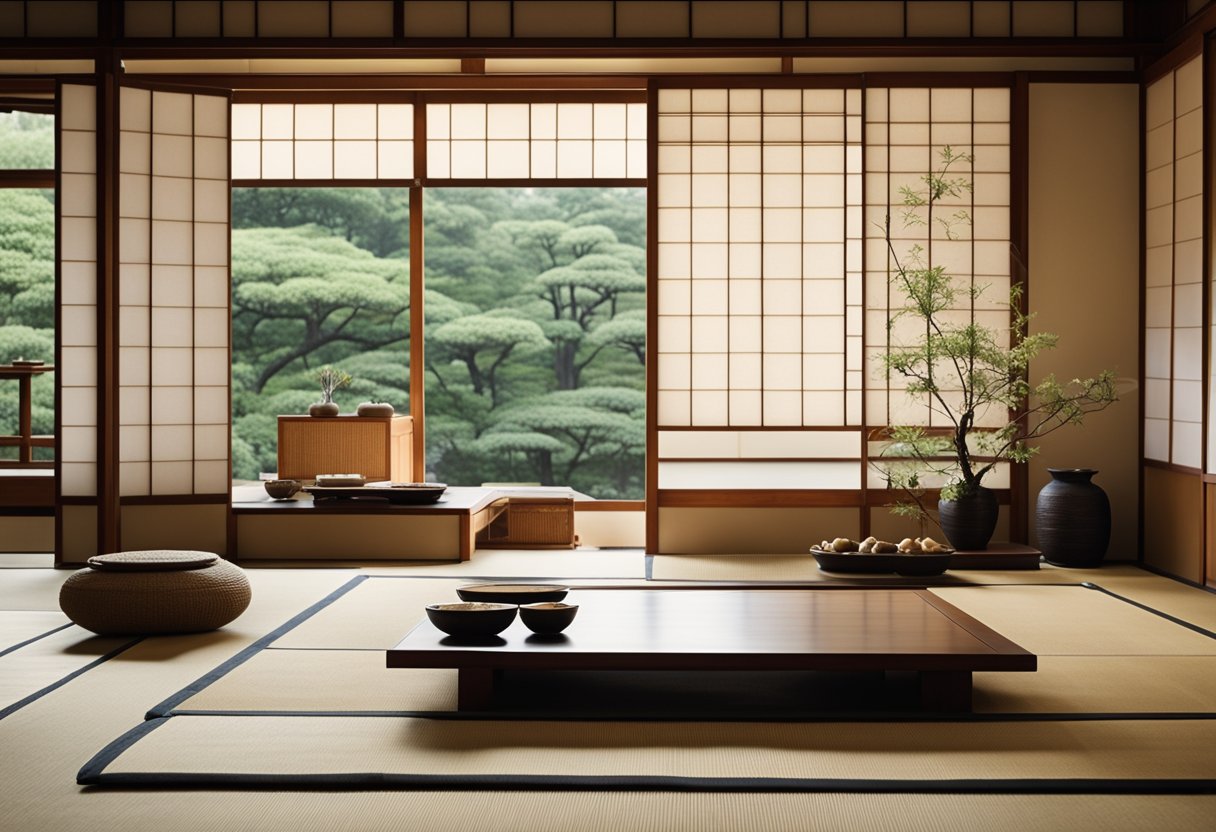
How can I incorporate minimalist aesthetics into my home for a Japanese-inspired look?
Minimalism is a key element of Japanese-inspired interior design. To achieve this look in your home, you can start by decluttering your space and simplifying your decor. Focus on clean lines, neutral colours, and natural materials like wood and stone. You can also incorporate traditional Japanese elements such as shoji screens, tatami mats, and sliding doors to add an authentic touch.
What are the key elements of a modern Japanese-style living room?
A modern Japanese-style living room should be simple, functional, and comfortable. It should feature low furniture, clean lines, and neutral colours. Natural materials like wood and stone are also important. You can add traditional Japanese elements like shoji screens or a tokonoma (a built-in alcove for displaying art or flowers) to create an authentic look.
Could you explain the concept of wabi-sabi in interior design?
Wabi-sabi is a Japanese aesthetic that celebrates imperfection and the beauty of natural materials. In interior design, this means incorporating elements like rough textures, asymmetry, and natural finishes like wood and stone. Wabi-sabi also encourages a sense of mindfulness and appreciation for the present moment, so incorporating elements like plants and natural light can help create a peaceful and calming atmosphere.
What are some exciting ways to create a Japanese-themed bedroom?
To create a Japanese-themed bedroom, focus on minimalism, simplicity, and natural materials. Use a low platform bed with a simple headboard, and keep the bedding and decor neutral and understated. You can add traditional Japanese elements like shoji screens or a tokonoma to add an authentic touch, or incorporate natural elements like plants or a water feature to create a calming atmosphere.
How does Japanese influence shape contemporary interior design?
Japanese influence can be seen in many contemporary interior design trends, from the use of natural materials and clean lines to the emphasis on minimalism and functionality. Japanese design also places a strong emphasis on the relationship between indoor and outdoor spaces, which has led to the popularity of indoor-outdoor living areas. Additionally, Japanese design principles like wabi-sabi and the concept of ma (negative space) have become increasingly popular in contemporary design.
What are the essentials for achieving a Japandi-style interior?
Japandi is a fusion of Japanese and Scandinavian design, and it combines the minimalism and functionality of Japanese design with the warmth and coziness of Scandinavian design. To achieve a Japandi-style interior, focus on natural materials like wood and stone, neutral colours, and clean lines. Add warmth and texture with soft furnishings like rugs and throws, and incorporate natural elements like plants to create a calming and peaceful atmosphere.

